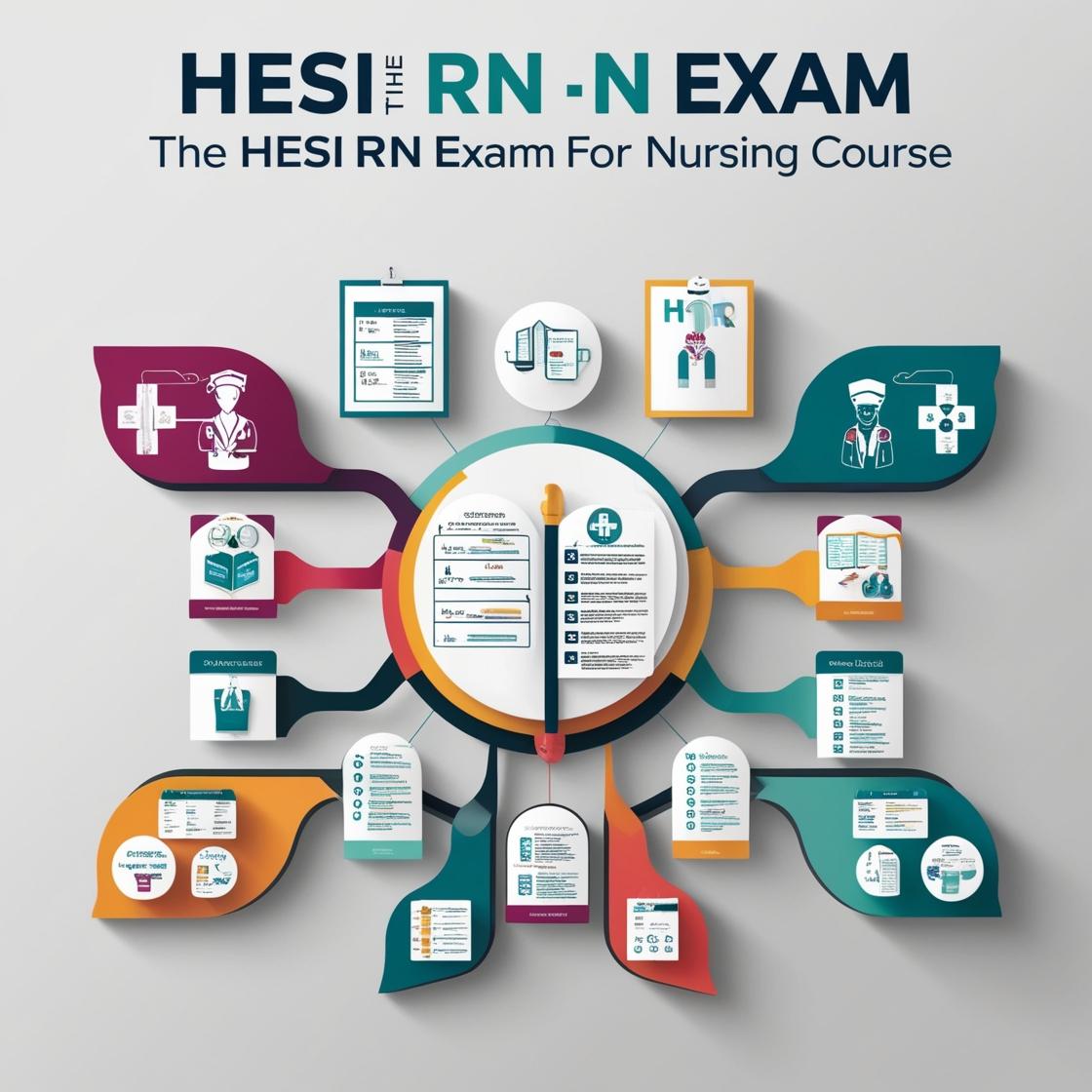HESI RN
HESI Medical Surgical Practice Exam Quizlet
1. A 49-year-old female client arrives at the clinic for an annual exam and asks the nurse why she becomes excessively diaphoretic and feels warm during nighttime. What is the nurse's best response?
- A. Explain the effects of follicle-stimulating and luteinizing hormones.
- B. Discuss perimenopause and related comfort measures.
- C. Assess lung fields and check for a cough productive of blood-tinged mucus.
- D. Inquire if a fever above 101°F (38.3°C) has occurred in the last 24 hours.
Correct answer: B
Rationale: The correct answer is B. The symptoms described by the client, excessive diaphoresis and feeling warm at night, are characteristic of perimenopause. During this period, lower estrogen levels lead to surges in follicle-stimulating hormone (FSH) and luteinizing hormone (LH), resulting in vasomotor instability, night sweats, and hot flashes. Therefore, discussing perimenopause and related comfort measures with the client is essential to provide education and support. Choice A is incorrect because explaining the effects of FSH and LH alone does not directly address the client's current symptoms. Choice C is irrelevant as it focuses on assessing lung fields and cough symptoms, which are not related to the client's menopausal symptoms. Choice D is not the best response as it is more focused on ruling out fever as a cause, which is not typically associated with the symptoms described by the client.
2. Which client should the nurse recognize as most likely to experience sleep apnea?
- A. Middle-aged female who takes a diuretic nightly.
- B. Obese older male client with a short, thick neck.
- C. Adolescent female with a history of tonsillectomy.
- D. School-aged male with a history of hyperactivity disorder.
Correct answer: B
Rationale: The correct answer is B. Sleep apnea is characterized by pauses in breathing during sleep, often due to a collapsed or blocked airway. Obesity and having a short, thick neck are risk factors for sleep apnea because excess fat around the neck can obstruct the airway. Option A (middle-aged female who takes a diuretic nightly) does not present as a common risk factor for sleep apnea. Option C (adolescent female with a history of tonsillectomy) may have had tonsils removed, which could reduce the risk of sleep apnea. Option D (school-aged male with a history of hyperactivity disorder) is not directly associated with an increased risk of sleep apnea.
3. The client who has a history of Parkinson's disease for the past 5 years is being assessed by the nurse. What symptoms would this client most likely exhibit?
- A. Loss of short-term memory, facial tics, and grimaces, and constant writhing movements.
- B. Shuffling gait, masklike facial expression, and tremors of the head.
- C. Extreme muscular weakness, easy fatigability, and ptosis.
- D. Numbness of the extremities, loss of balance, and visual disturbances.
Correct answer: B
Rationale: Parkinson's Disease, a common neurologic progressive disorder in older clients, is characterized by symptoms such as shuffling gait, masklike facial expression, and tremors of the head and hands. Choice A is incorrect as symptoms like loss of short-term memory, facial tics, and constant writhing movements are not typically associated with Parkinson's disease. Choice C is incorrect as extreme muscular weakness, easy fatigability, and ptosis are more indicative of other conditions like myasthenia gravis. Choice D is incorrect as numbness of the extremities, loss of balance, and visual disturbances are not classic symptoms of Parkinson's disease.
4. What is the most important content for the nurse to include in discharge teaching for a 51-year-old truck driver who smokes two packs of cigarettes a day, is 30 pounds overweight, and has been diagnosed with a gastric ulcer?
- A. Information about smoking cessation.
- B. Diet instructions for a low-residue diet.
- C. Instructions on a weight-loss program.
- D. The importance of increasing milk in the diet.
Correct answer: A
Rationale: The correct answer is A: Information about smoking cessation. Smoking is a significant risk factor for ulcer formation. It is crucial for the nurse to include smoking cessation information in the discharge teaching to help manage the gastric ulcer and prevent further complications. Choices B, C, and D are less relevant in this scenario. While diet modifications may be beneficial, addressing smoking cessation takes precedence due to its direct correlation with ulcer development.
5. In a 46-year-old female client admitted for acute renal failure secondary to diabetes and hypertension, which test is the best indicator of adequate glomerular filtration?
- A. Serum creatinine.
- B. Blood urea nitrogen (BUN).
- C. Sedimentation rate.
- D. Urine specific gravity.
Correct answer: A
Rationale: The correct answer is A: Serum creatinine. Creatinine is a product of muscle metabolism that is filtered by the glomerulus. Blood levels of creatinine are not affected by dietary or fluid intake, making it a reliable indicator of kidney function. An elevated creatinine level strongly suggests nephron loss, indicating decreased glomerular filtration rate. Choice B, Blood Urea Nitrogen (BUN), reflects the amount of urea nitrogen in the blood and can be influenced by factors other than kidney function, such as protein intake and liver health, making it less specific for evaluating glomerular filtration. Choice C, Sedimentation rate, is a measure of how quickly red blood cells settle in a test tube and is not a direct marker of kidney function. Choice D, Urine specific gravity, mainly reflects the kidney's ability to concentrate urine and is not a direct indicator of glomerular filtration rate. Therefore, Serum creatinine is the most appropriate test to assess glomerular filtration in this scenario.
Similar Questions

Access More Features
HESI RN Basic
$89/ 30 days
- 50,000 Questions with answers
- All HESI courses Coverage
- 30 days access @ $89
HESI RN Premium
$149.99/ 90 days
- 50,000 Questions with answers
- All HESI courses Coverage
- 30 days access @ $149.99
